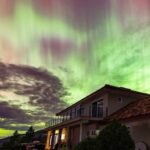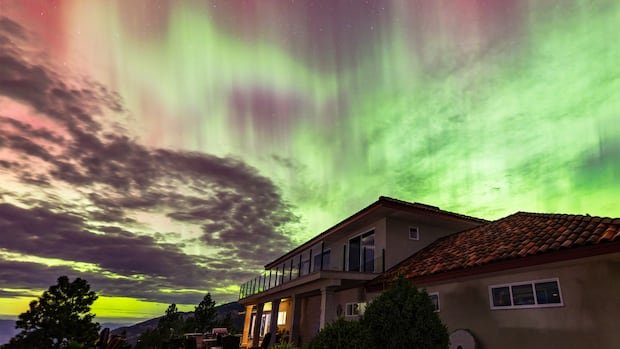The new year begins with the peak of the Quadrantids, one of the strongest meteor showers of the year, according to NASA.
But keep your eyes peeled because with a peak that only lasts about six hours, as opposed to several days, the Quadrantids are also one of the fastest-burning meteor showers in the night sky.
Meteors are remnants of broken asteroids and comet particles that scatter in dusty trails orbiting the sun. Every year, Earth passes through debris trails, and pieces of dust and rock create colorful, fiery displays called meteor showers as they disintegrate in our planet’s atmosphere.
The Quadrantid peak is so limited compared to most meteor showers because the shower only has a thin stream of particles and the Earth quickly passes through the densest concentration of those particles at a perpendicular angle, according to the POT.
Viewing the Quadrantids
Maximum meteor activity is expected to peak between 10 a.m. ET and 1 p.m. ET (3 to 6 p.m. Universal Coordinated Time) on January 3, favoring Alaska, Hawaii and Far East Asia, it said. Bob Lunsford, fireball report coordinator for the American Meteor Society. .
The best time to spot the meteor shower will be during the hours before dawn, according to EarthSky.
Sky watchers on the east coast of North America can see up to 25 meteors streaking through the skies, while those on the west coast could see twice that number due to a later sunrise, Lunsford said. And if skies remain clear over western Alaska, shower viewers could witness in excess of 100 meteors per hour, he said.
The crescent moon, only 11 percent full, will set well before midnight, allowing unobstructed viewing of the meteor shower, Lunsford said.
While the Quadrantids do not have long, persistent trains behind them, they are capable of producing bright fireballs for a dramatic display. According to NASA, fireballs are bright explosions of light and color associated with larger particles that linger longer than typical meteor streaks.
The Quadrantids are generally not visible in the Southern Hemisphere because the shower’s radiant point, or the point from which the meteors appear to come, does not rise as high in the sky before dawn.
If you live in an urban area, you may want to drive to a place that is not full of bright city lights. If you can find an area that is not affected by light pollution, meteors could be visible every two minutes from evening to dawn.
Find an open area with a wide view of the sky. Make sure you have a chair or blanket so you can look up. And give your eyes 20 to 30 minutes to adjust to the darkness, without looking at your phone, to make meteors easier to spot.
The strange origins of the shower
If the meteor shower’s name seems unusual, it’s probably because it doesn’t seem to be related to a constellation. This is because the eponymous constellation of the Quadrantids no longer exists, at least not as a recognized constellation.
The constellation Quadrans Muralis, first observed and noted in 1795 between Boötes and Draco, is no longer included in the International Astronomical Union’s list of modern constellations because it is considered obsolete and is no longer used as a reference point for celestial navigation. , according to EarthSky.
According to EarthSky, the shower’s radiant point forms a right angle between the Big Dipper and the bright star Arcturus. But the meteors will be visible everywhere in the sky, so it’s not necessary to look only in that direction.
Like the Geminid meteor shower, the Quadrantids come from a mysterious asteroid or “rock comet,” rather than an icy comet, which is unusual. This particular asteroid is 2003 EH1, which takes 5.52 years to complete one orbit around the sun and measures 3.2 kilometers (2 miles) across.
But astronomers believe that a second object, comet 96P/Machholz, may also contribute to the shower, according to EarthSky. The comet orbits the sun every 5.3 years.
Scientists believe that a larger comet was gravitationally forced into a short orbit by the Sun around 2000 BC. The comet left behind meteors for years before breaking up sometime between 100 and 950 AD. As a result, the comet left behind many descendants. celestial bodies known collectively as the Machholz Complex, which includes the parent bodies of the Quadrantid meteor shower, comet 96P/Machholz, and comet 96P/Machholz. asteroid. 2003 EH1, as well as two different groups of comets and eight meteor showers, according to EarthSky.
Meteor showers of 2025
After the Quadrantids, there is a slight lull in meteor shower activity, and the next one won’t occur until April. Here are the remaining rainfall that can be anticipated and their peak dates in 2025.
Lyrids: April 21 and 22
Eta Aquarids: May 3 and 4
Southern Delta Aquarids: July 29 and 30
Alpha Capricornids: July 29-30
Perseids: August 12 and 13
Draconids: October 8 and 9
Orionids: October 22 and 23
Southern Taurids: November 3 and 4
Northern Taurids: November 8 and 9
Leonids: November 16 and 17
Geminids: December 12 and 13
Ursids: December 21 and 22









